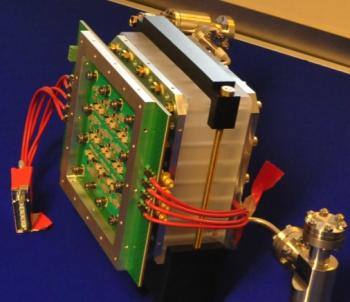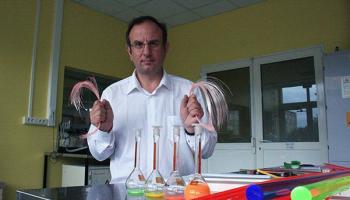CaLIPSO is a medical imaging project aiming at a breakthrough in high-spatial-resolution Positron Emission Tomography (PET). The CaLIPSO concept for the detection of 511 keV gamma rays is based on the precise 3D localisation of the photoelectron in an organometallic liquid, associated with ultra fast electronics. This detector R&D activity is on-going at IRFU since 2009, with very promising results.
The CaLIPSO group at SPP gathers three physicists and three PhD students. The group leader is Dominique Yvon.
- Group Leader :
- Physicists :
- Slava Sharyy
- Patrice Verrecchia (on pre-retirement leave)
- PhD Students :
The QYOS project aims at developing an innovative device made of fluorescent plastic optical fibres with very specific microstructure, capable of concentrating the solar light onto photovoltaic cells. The device transforms a polychromatic, multidirectional radiation (as the solar light) into an intense flux of monochromatic, unidirectional light, with high conversion efficiency. The specific behaviour of these fibres comes from the convergence of an ensemble of quantum phenomena. The basic idea is to match the fluorescence band of a colorant with the forbidden bands of a photonic crystal thanks to a specific index profile of the fibre that reduces the phase space to desexcitation along its axis. Furthermore, the coupling of fluorescence with authorised propagation modes along the central light guide of the fibre amplifies the radiative desexcitation, in virtu of the Purcell effect. The QYOS project is pursued by Olivier Bésida.



